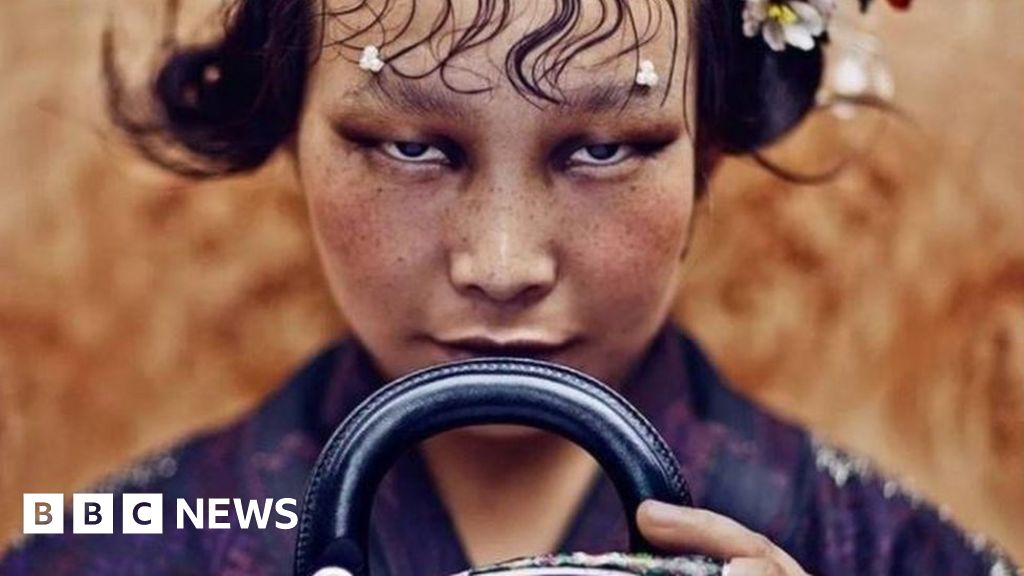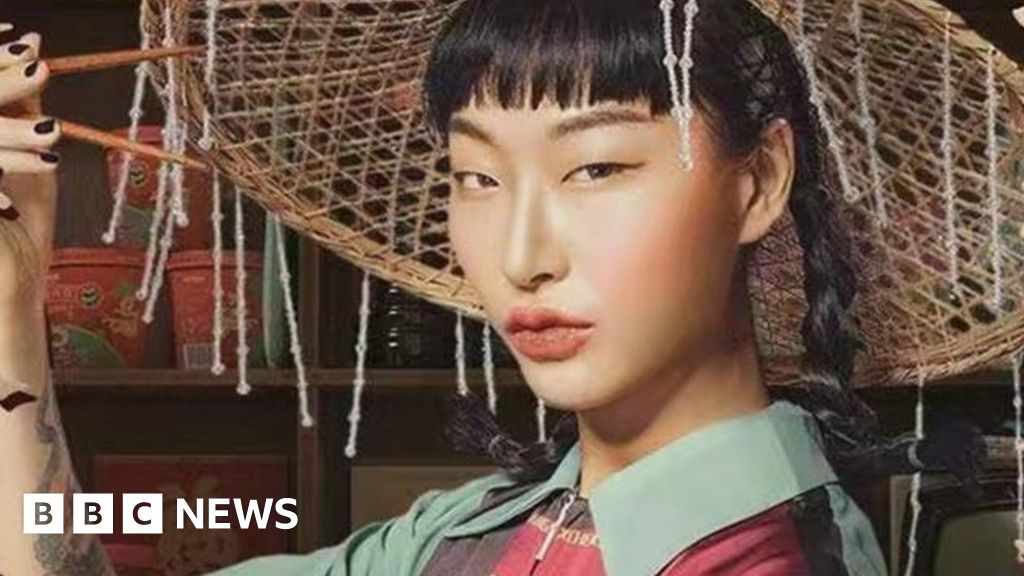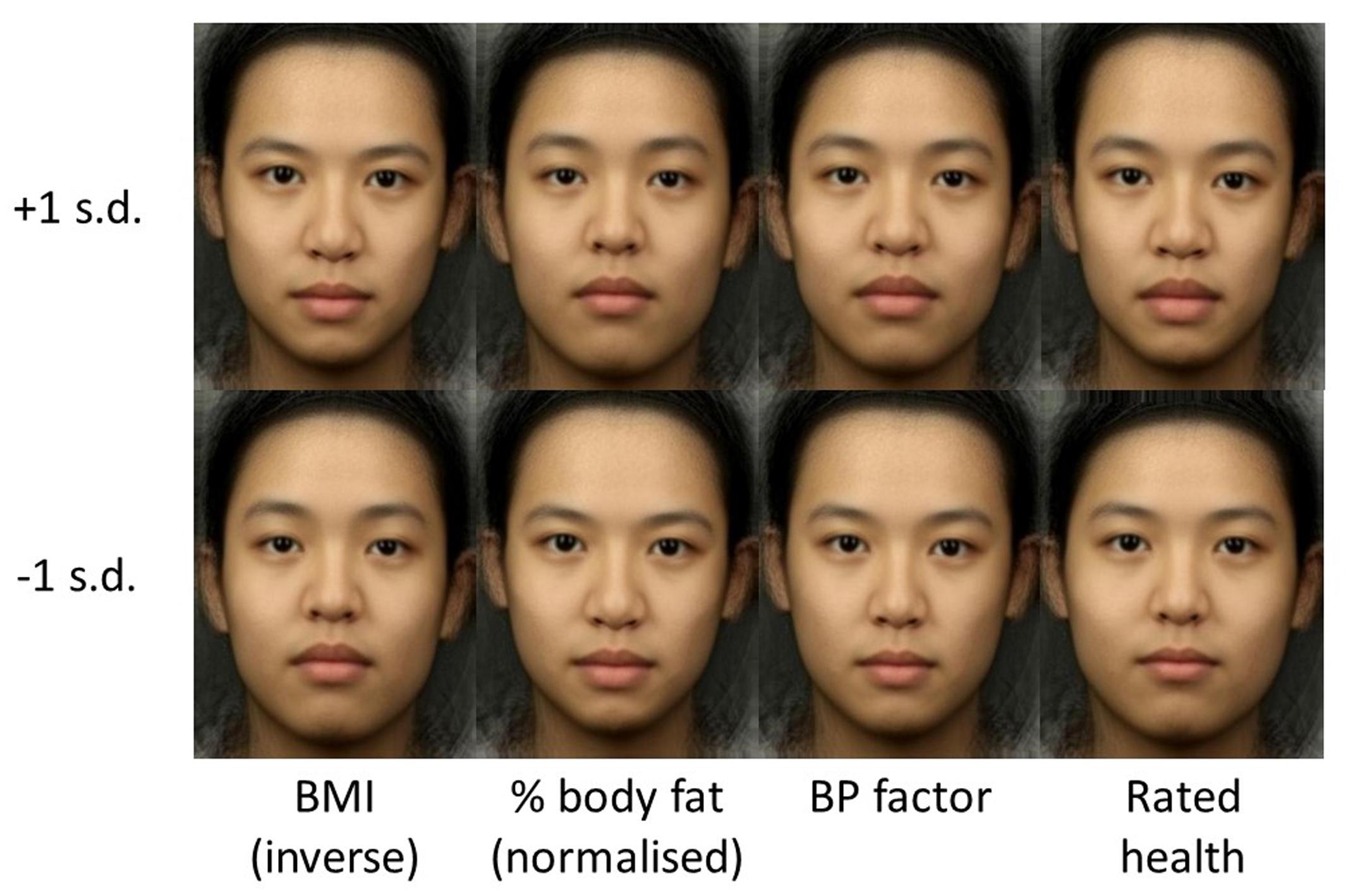Why Do Asians Have Small Eyes? Debunking Myths And Understanding The Science Behind It
Alright, let's dive right into this topic because it's time we clear up some misconceptions that have been floating around for way too long. If you've ever wondered why Asians tend to have smaller eyes, you're not alone. This question has sparked debates, stereotypes, and even hurtful comments in various circles. But here's the thing—there’s actual science behind it, and it’s way more fascinating than you might think. So, buckle up, because we’re about to break it down for you.
Now, before we go any further, let me just say this: physical characteristics like eye shape are a product of evolution, genetics, and adaptation. It’s not something that should be used to judge or stereotype an entire group of people. The goal here is to educate, inform, and hopefully help you see things from a more scientific and compassionate perspective.
So, why exactly do Asians have smaller eyes? Well, the answer isn’t as simple as you might think. It involves a mix of genetics, environmental factors, and even cultural influences. Stick with me, and by the end of this article, you’ll have a much clearer understanding of this topic—and maybe even a newfound appreciation for the diversity of human features.
Read also:Sweety Queens Fitness Routine Unveiling The Secrets Behind Her Glowing Fitness
Understanding the Basics: What Makes Asian Eyes Unique?
First things first, let’s talk about the anatomy of Asian eyes. If you’ve ever noticed, many people of East Asian descent tend to have smaller, narrower eyes compared to other ethnic groups. This isn’t just a coincidence—it’s a result of specific genetic traits that have been passed down through generations. But what exactly causes this difference?
Genetic Factors Play a Huge Role
Science tells us that eye shape is largely determined by our genes. In the case of Asians, there are certain genetic markers that contribute to the formation of smaller eyes. Specifically, a gene called EDAR has been linked to the development of distinct facial features in East Asians, including smaller eyes and thicker eyelids. This gene variation is thought to have evolved thousands of years ago as a response to the environment.
- EDAR gene influences facial features like eye shape and thickness of eyelids.
- This gene variation is more common in East Asian populations.
- It’s believed to have helped early humans adapt to colder climates.
Environmental Adaptation: A Key Factor in Evolution
Here’s where it gets really interesting. Scientists believe that the smaller eye shape in Asians may have evolved as a way to protect the eyes from harsh environmental conditions. Thousands of years ago, early humans living in colder regions of Asia needed to shield their eyes from the wind, snow, and extreme temperatures. Smaller eyes with thicker eyelids provided better protection, making it easier to survive in these challenging environments.
Think about it—wouldn’t you want extra protection if you were living in a place where the wind could literally freeze your face off? Exactly. Evolution is a clever thing, and it works in mysterious ways to help us adapt to our surroundings.
Debunking the Stereotypes: Why Small Eyes Are Not a Flaw
Now, let’s address the elephant in the room. Over the years, there have been countless stereotypes and even offensive comments about Asian eyes. Some people have gone so far as to suggest that smaller eyes are somehow inferior or less attractive. But here’s the truth: there’s absolutely nothing wrong with having smaller eyes. In fact, it’s just one of the many beautiful variations of human features.
The Beauty of Diversity
Diversity is what makes the world such an interesting place. Every culture, ethnicity, and individual brings something unique to the table. When it comes to eye shape, there’s no universal standard of beauty. What might be considered beautiful in one culture might not be the same in another—and that’s okay!
Read also:Anette Qviberg Unveiling The Life And Career Of A Remarkable Artist
Instead of focusing on what makes us different, we should celebrate the things that make us unique. Whether you have small eyes, big eyes, or something in between, you’re still amazing just the way you are.
The Impact of Stereotypes on Mental Health
Unfortunately, stereotypes about Asian eyes can have a negative impact on mental health, especially for young people who are still figuring out their identity. Many Asians have reported feeling self-conscious or even ashamed of their eye shape because of the way it’s been portrayed in media or by others. This can lead to low self-esteem, anxiety, and even depression.
But here’s the good news: more and more people are starting to speak out against these harmful stereotypes. Celebrities like BTS, Awkwafina, and Sandra Oh have helped normalize Asian features and promote self-acceptance. And that’s a step in the right direction.
Science vs. Stereotypes: What the Experts Say
When it comes to understanding why Asians have smaller eyes, it’s important to rely on scientific evidence rather than outdated stereotypes. So, what do the experts have to say about this topic?
Studies on Asian Eye Shape
Several studies have explored the genetic and environmental factors that contribute to the unique characteristics of Asian eyes. One study published in the journal *Nature* found that the EDAR gene variation is present in about 93% of East Asians, compared to only 7% of Europeans. This suggests that the gene played a significant role in shaping the facial features of early Asian populations.
Another study looked at the relationship between eye shape and climate adaptation. Researchers discovered that smaller eyes with thicker eyelids provided better protection against cold winds and UV radiation, which were common in the regions where early Asians lived.
Experts Weigh In
According to Dr. Sarah Tishkoff, a professor of genetics at the University of Pennsylvania, "The variation in eye shape among different ethnic groups is a result of natural selection and adaptation to the environment. It’s not something that should be judged or criticized—it’s simply a reflection of our evolutionary history."
Dr. Tishkoff’s research has helped shed light on the genetic basis of physical traits like eye shape, and her work continues to challenge outdated stereotypes about race and ethnicity.
Cultural Influences on Perception
While genetics and evolution play a big role in determining eye shape, cultural factors also influence how we perceive and value certain physical features. In many Asian cultures, smaller eyes are seen as a sign of beauty and refinement. This is especially true in countries like Japan and Korea, where traditional aesthetics emphasize delicate, understated features.
Beauty Standards Around the World
Beauty standards vary greatly from one culture to another. In Western countries, for example, big, wide eyes are often considered more attractive. But in many Asian cultures, smaller eyes are celebrated for their elegance and subtlety. This difference in perception highlights the importance of cultural context when discussing topics like eye shape.
The Rise of Cosmetic Surgery
It’s worth noting that some Asians choose to undergo cosmetic surgery to alter the shape of their eyes. Procedures like double eyelid surgery have become increasingly popular in recent years, with many people seeking a more "Westernized" appearance. But here’s the thing: this trend doesn’t define the entire Asian population. Most Asians are perfectly happy with their natural features and wouldn’t dream of changing them.
At the end of the day, it’s all about personal choice. If someone wants to alter their appearance, that’s their decision to make. But it’s important to remember that there’s nothing wrong with embracing your natural beauty.
The Role of Genetics in Eye Shape
Let’s take a closer look at the genetic factors that influence eye shape. As we mentioned earlier, the EDAR gene plays a major role in determining the characteristics of Asian eyes. But it’s not the only gene involved. Other genetic markers, such as those responsible for skull shape and facial structure, also contribute to the overall appearance of the eyes.
How Genetics Works
Genetics is a complex field, and eye shape is no exception. Multiple genes interact with each other to create the unique features we see in every individual. In the case of Asians, the combination of genetic variations results in smaller, narrower eyes with thicker eyelids.
It’s important to note that genetic traits aren’t fixed—they can change over time due to factors like migration, intermarriage, and environmental adaptation. This means that the characteristics of Asian eyes may continue to evolve in the future.
Environmental Factors: The Role of Climate
As we discussed earlier, environmental factors played a significant role in shaping the eye shape of early Asians. But how exactly did this happen? Let’s break it down.
Adapting to Cold Climates
Thousands of years ago, early humans living in Asia faced harsh winters with freezing temperatures and strong winds. To survive, they needed to develop physical traits that would help protect them from these conditions. Smaller eyes with thicker eyelids provided better insulation and reduced the risk of frostbite and UV damage.
Over time, these traits became more common in the population, as individuals with smaller eyes were more likely to survive and pass on their genes to future generations.
The Impact of UV Radiation
In addition to cold weather, early Asians also had to contend with high levels of UV radiation, especially in regions with long daylight hours. Smaller eyes with thicker eyelids helped shield the eyes from harmful UV rays, reducing the risk of damage and disease.
This adaptation was particularly important for populations living in northern Asia, where the sun can be intense even during the winter months.
Breaking Down the Myths: What You Need to Know
Now that we’ve covered the science behind Asian eye shape, let’s take a moment to debunk some common myths. Here are a few things you need to know:
- Smaller eyes are not a flaw—they’re simply a result of genetic and environmental factors.
- Asian eye shape is not inferior to other eye shapes—it’s just different.
- There’s no universal standard of beauty when it comes to eye shape.
- Cultural perceptions of beauty vary greatly around the world.
Why We Should Celebrate Diversity
Instead of focusing on what makes us different, we should celebrate the things that make us unique. Whether it’s eye shape, skin tone, or hair texture, every feature has a story to tell. By embracing diversity, we can create a more inclusive and accepting world for everyone.
Conclusion: Embracing Our Differences
So, there you have it—a comprehensive look at why Asians have smaller eyes. From genetics to environmental adaptation, there are many factors that contribute to this unique characteristic. And while it’s important to understand the science behind it, it’s equally important to remember that physical features shouldn’t be used to judge or stereotype anyone.
As we’ve seen, diversity is what makes the world such an interesting place. Instead of focusing on what makes us different, let’s celebrate the things that make us unique. Whether you have small eyes, big eyes, or something in between, you’re still amazing just the way you are.
Now, it’s your turn to take action. Leave a comment below and share your thoughts on this topic. Do you have any questions or insights to add? Or maybe you just want to say hi—that’s cool too! And don’t forget to check out our other articles for more fascinating insights into the world around us.
Table of Contents
- Understanding the Basics: What Makes Asian Eyes Unique?
- Genetic Factors Play a Huge Role
- Environmental Adaptation: A Key Factor in Evolution
- Debunking the Stereotypes: Why Small Eyes Are Not a Flaw
- The Beauty of Diversity
- The Impact of Stereotypes on Mental Health
- Science vs. Stereotypes: What the Experts Say
- Cultural Influences on Perception
- The Role of Genetics in Eye Shape
- Environmental Factors: The Role of Climate


